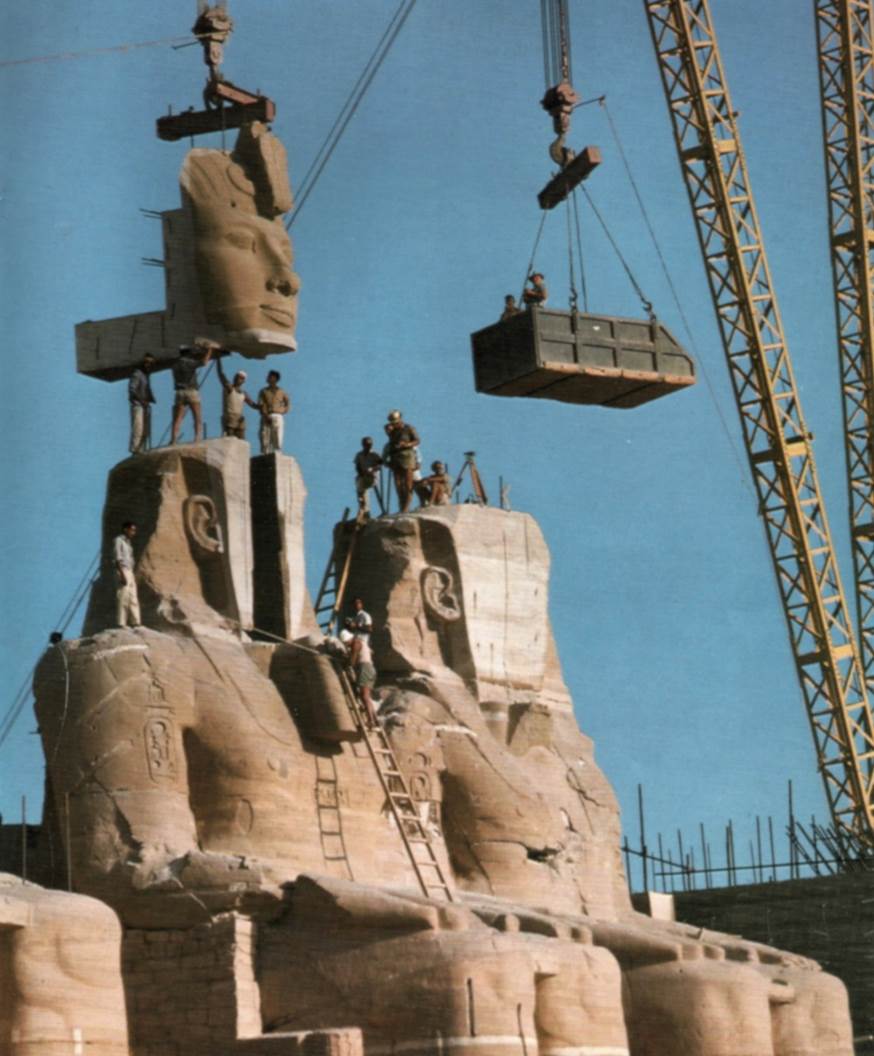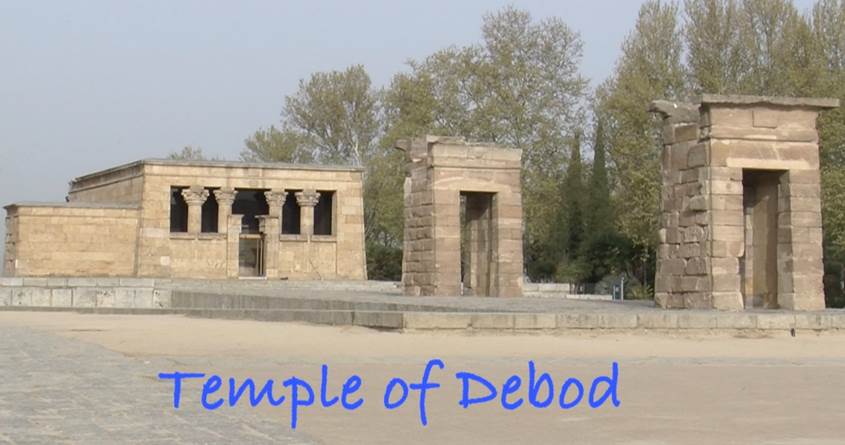The Relocated Ancient Temples
By Dr Khalid Siddiqui
Ohio

In 1960, Egypt started the construction of the Aswan High Dam on River Nile. The plan called for the reservoir (Lake Nasser) to submerge numerous monuments and archeological sites, including the large temples of Abu Simbel and Philae. UNESCO started the International Campaign to Save the Monuments of Nubia. Fifty countries joined the effort, providing equipment, expertise, and money.
Egyptologists, photographers, and architects documented and studied the monuments for two years. Twenty-two monuments and architectural complexes were preserved by moving them to higher grounds. The biggest challenge was moving the big temples of Abu Simbel and Philae.

An ambitious plan was devised to saw off pieces of the temple including the huge statue of Ramses II, number them, and transport them to the new site where using huge cranes they would be reassembled. There was no TV coverage, but Time magazine regularly showed the pictures of this relocation process. See the photograph (from Internet) of the statue of Ramses II being reassembled. While the dam was being built, this relocation process continued on until just before the time the reservoir was going to be filled with water. I saw these temples when I was in Egypt in 1995. The architects did such a remarkable job that the statues show absolutely no evidence of reassembly.
The last four smaller temples (Debod, Dendur, Taffeh and Ellesyia) were initially abandoned and allowed to be submerged. It was not considered worth the effort, time and money to relocate them. Later, the Egyptian authorities came up with an interesting idea. It was decided to donate them to the four countries, in recognition of their contributions, who had helped with the Aswan Dam project the most. So, these four temples were dismantled (just like the other temples), the pieces were stored in crates, and shipped to the four countries – Spain, USA, Netherlands, and Italy.
Temple of Debod
The dismantled Temple of Debod arrived in Spain in crates in 1968. It was reassembled at Parque del Oeste in Madrid, near the Royal Palace, and opened to the public in 1972. I visited the temple in 2018. (See the photograph.) The temple stood undamaged for 2,200 years in Egypt, but in Madrid its soft sandstone walls are being eroded by air pollution,

rain and vandalism. Several visiting Egyptologists criticized the fact that unlike other donated temples, the structure continues to be exposed to the elements.
Famous Egyptian archeologist, Zahi Hawass, demanded that Spain hand back the temple if it is unwilling to take care of it. Finally, the Madrilenian city council made a unanimous decision to accelerate plans to cover the monument in a glass bubble in February 2020. In the meantime, a guard was posted to deter the people from spray painting graffiti on the walls of the temple. I checked with Pablo Navarro, the guide in Madrid, yesterday. He said nothing has been done yet. The government is blaming the delay on Covid.
Temple of Dendur
In 1965, Egypt presented the temple to the United States in recognition of the United States' contribution of $16 million toward saving the monuments. Jacqueline Kennedy accepted the gift on behalf of the United States.
The disassembled temple arrived by sea in New York City in August 1968. It cost $9.5 million (donated by the co-founder of Reader’s Digest) to move the temple. The temple was housed in a custom-designed wing of The Metropolitan Museum of Art in New York City. They also designed a stippled glass ceiling and north wall to diffuse the light in order to mimic the lighting in Nubia. Other technologies were used to simulate the climate of Egypt. Reconstruction was started in July 1975, and the temple exhibit opened to the public in September 1978.
Temple of Taffeh
657 blocks weighing 250 tons arrived in the Netherlands in 1979. It was reconstructed in a new wing of the National Museum of Antiquities in Leiden. The new structure was designed in such a way that the Dutch weather would not affect the stone, and natural light would illuminate the temple.
Temple of Ellesyia
It was built about 3,400 year ago by the Pharaoh Thutmosis III. The temple was moved to Museo Egizio at Turin, Italy in order to save it from being submerged by Lake Nasser.
So, four original ancient Egyptian temples are located outside Egypt – three in Europe and one in the USA.

